A walk-in shower is stylish, easy to access and ideal for a small space. These tips from our experts will help you get started.
A walk-in shower is more than a sleek upgrade for your bathroom: it’s also practical, cost-effective and will help you make the most of a small space. To start, the flush-to-floor shower tray offers a step-free entrance and the advantages of a wet room without the cost of tanking (waterproofing) the whole room. Then there’s the lack of clutter from bathroom accoutrements.
“Many traditional shower enclosures don’t feel particularly spacious – whatever their size – because the user is surrounded by glass panels and wide profiles with probably a wall on one or two sides,” says James Clark of On The Level. In contrast, a walk-in shower creates the illusion of more showering space. If this sounds like the look you want for your bathroom, read on for more expert advice.
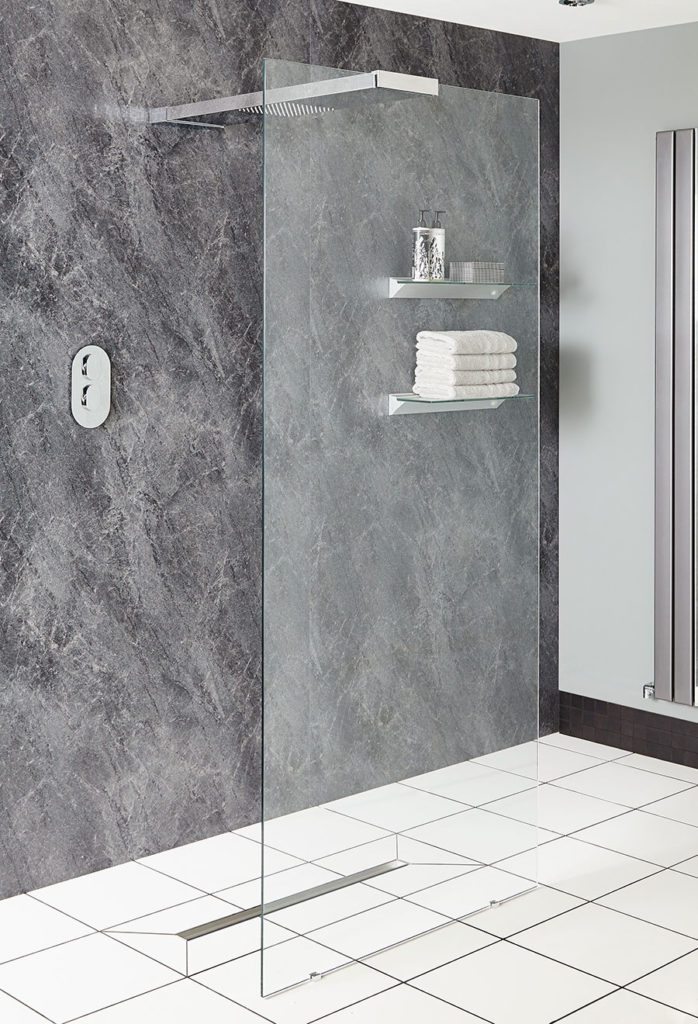
The Playtime walk-through shower, from £579 at Bathstore, is available in three sizes and features extra thick 8mm tempered glass, which is less prone to breakage.
Off-the-shelf or bespoke?
Off-the-shelf shower panels will work for most bathroom shapes, sizes and budgets. However, if you have an awkward-shaped bathroom (with a sloping ceiling or eaves, for example) or simply want something unique, non-standard and bespoke options are also available.
“A bespoke option is the ideal way of ensuring a shower screen is made to your exact specification,” explains Jayne Barnes at Aqata. “Special heights and widths, notched panels, angled doors and panels can all be handmade to ensure an exact fit.” A bespoke solution will also give you the chance to add personal details, such as a gold finish or glass etchings.
Take measurements for a bespoke screen once the tiling has been done to make sure the fit will be snug. Once you’ve placed your order, be prepared to wait at least a couple of weeks before it’s sent for installation. You’re likely to pay more for a bespoke screen: keep this in mind when budgeting for your bathroom.
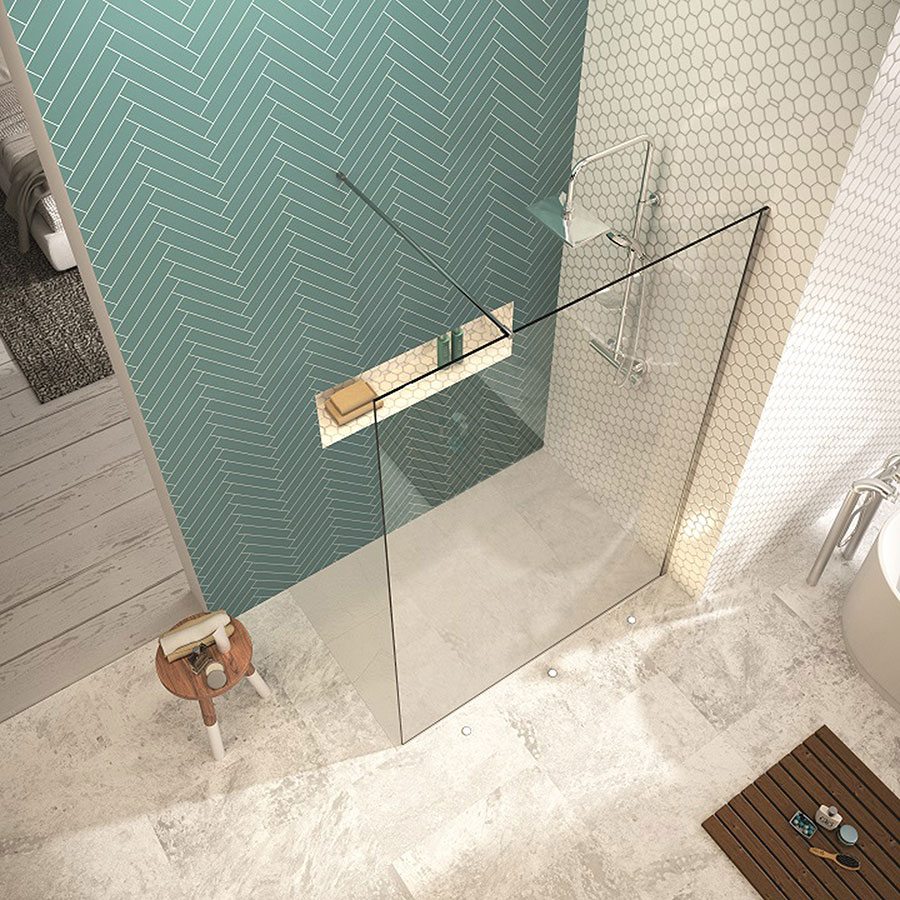
Merlyn Showering enclosures can be installed into almost any bathroom layout. This shower wall starts from £337.61. Many other designs are available, including double-entry and corner enclosures, and swivel panels.
What else do I need to know about panels?
You’ll need to balance the look you want to achieve with the thickness of glass available in your favourite designs. “We would always suggest a minimum of 6mm but our most popular ranges feature what is often considered the most aesthetically pleasing 8mm and 10mm toughened glass,” says Edel Nicholson of Merlyn Showering.
Weight is potentially a consideration when it comes to installation. Given that 10mm shower enclosures are generally heavier, some require a two-man fit.
The Design Solutions range from Aqata can be customised to create personalised designs. This double-entry shower screen measuring 1600mm with bronze glass is £1650.
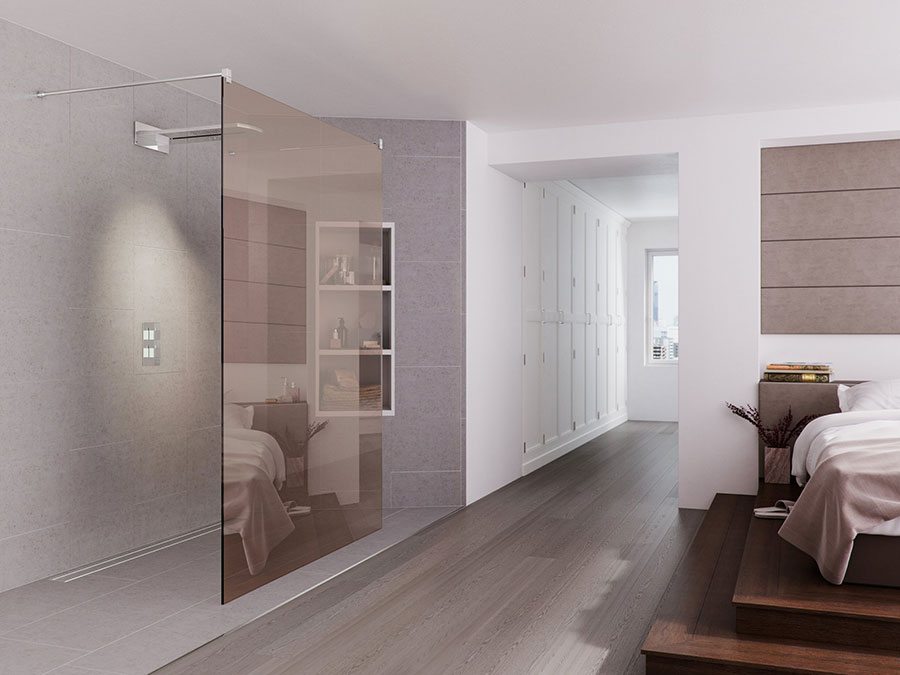
The Design Solutions range from Aqata can be customised to create personalised designs. This double-entry shower screen, featuring bronze glass, measures 1600mm and is priced £1650.
Will my shower screen come with a protective coating as standard?
Not always, particularly at the lower end of the market. Think about investing in a branded product with a protective coating that will resist staining from hard water deposits and keep the shower screen looking newer for longer.
“ClearShield ECO-GLASS protection is supplied as standard on all our shower enclosures and screens,” says Jayne of Aqata. “It works just like non-stick cookware and acts as a protective barrier on the surface of the glass, providing up to 10 years of effortless cleaning.”
A simple “little and often” care routine will also keep your shower looking as good as new. Each time you shower, wipe away excess water from the glass, frame and fittings with a squeegee and dry with a soft cloth. It will take less than a minute and minimise the amount of serious cleaning that you need to do.
“We recommend using the ClearShield After-Care cleaner once a week to polish the glass and framework for maximum effect,” continues Jayne. “This is a gentle, environmentally friendly product. Other cleaners are fine too as long as they’re non-abrasive and have a pH of between 4 and 8.
“It’s important not to use ‘spray and leave’ type products or leave neat cleaning products on any part of the shower as these contain chemicals that can damage the surfaces,” Jayne adds.
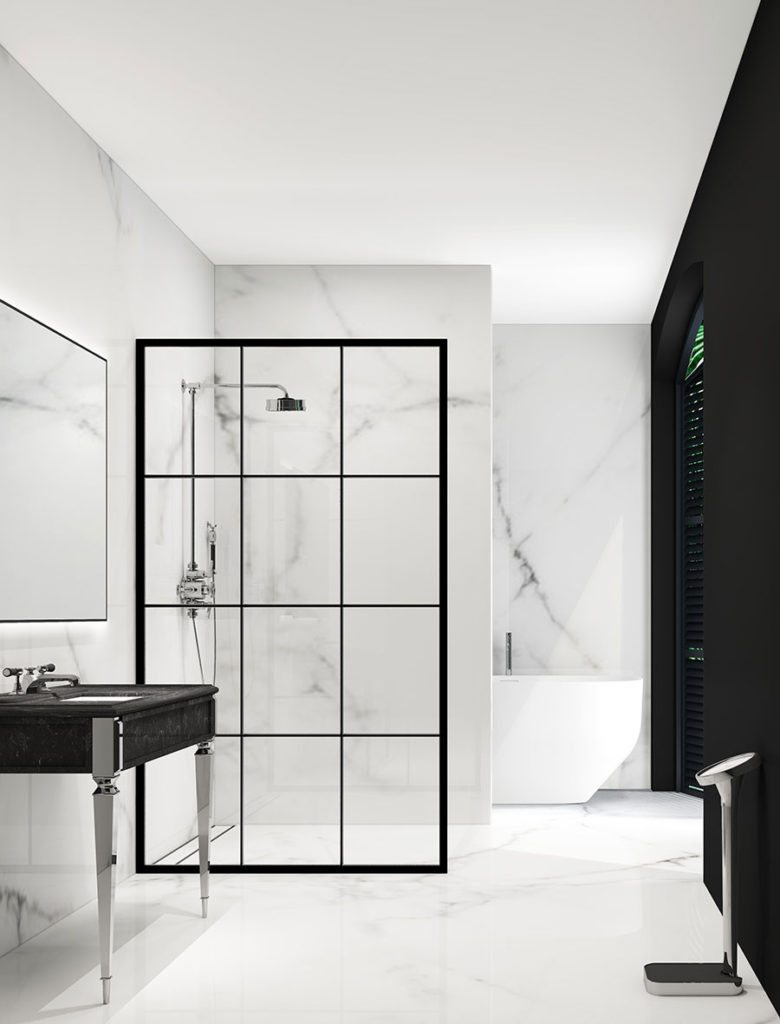
The MetalCraft collection by Majestic features a minimalist aluminium frame in matt black. Available in three styles, Frame, Horizon and Trellis (shown), prices range from £1,800 to £2,800.
What about drainage?
A flush-to-floor shower tray is essential to achieving the look of a wet room. There’s an ever-expanding range of sizes and finishes available and, as with your choice of panel, you’re restricted only by your individual taste and budget. Edel advises investing in a good-quality tray to ensure there’s a fast-flow waste system. This means that waste water will drain away quickly and discretely, avoiding standing water and leakage.
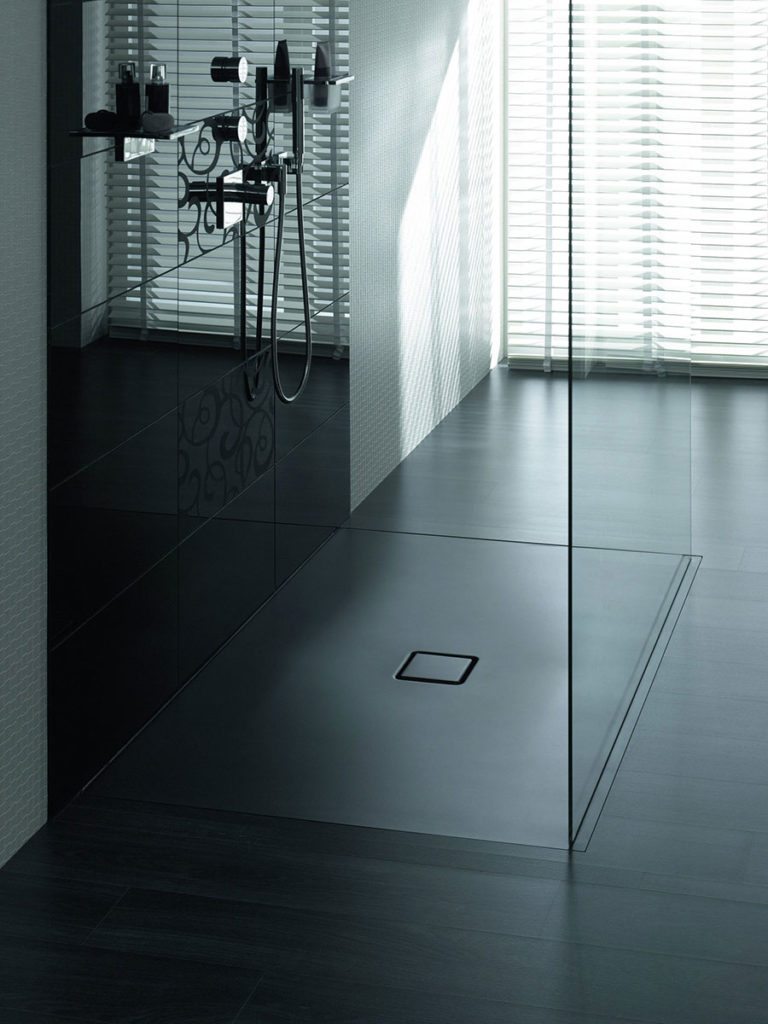
Guaranteed for 30 years, Conoflat by Kaldewei is made from steel enamel and comes with an easy-clean surface treatment and anti-slip finish. It’s available in a total of 33 tray sizes; prices start from around £779.
What are my options if I don’t want a visible shower tray?
The alternative to installing a flush-to-floor shower tray is an underfloor tray, or wet room former, that sits out of sight under the floor. This will make the bathroom look bigger because the floor tiles can flow rather than being interrupted by a shower tray that may be a different colour from the tiles.
It also works well in more traditional bathrooms, says James of On The Level. “This is because the simple screen on a tiled floor does not clash with classic design and won’t overshadow the character of the room.”
You can buy a wet room former off the shelf, but, if you have an unusual-shaped space or feel creative, there are bespoke options available.
The tiles you choose as your final floor covering need to be suitable for use on a wet room floor. Highly glazed or shiny tiles are not safe as they become slippery when wet. “Look for quality porcelain bathroom floor tiles with anti-slip texture – some have an anti-slip rating,” advises James. “Also bear in mind that porcelain tiles are much tougher than ceramic.”
If you need to, take advice from a retailer to ensure your new shower is stylish yet safe.
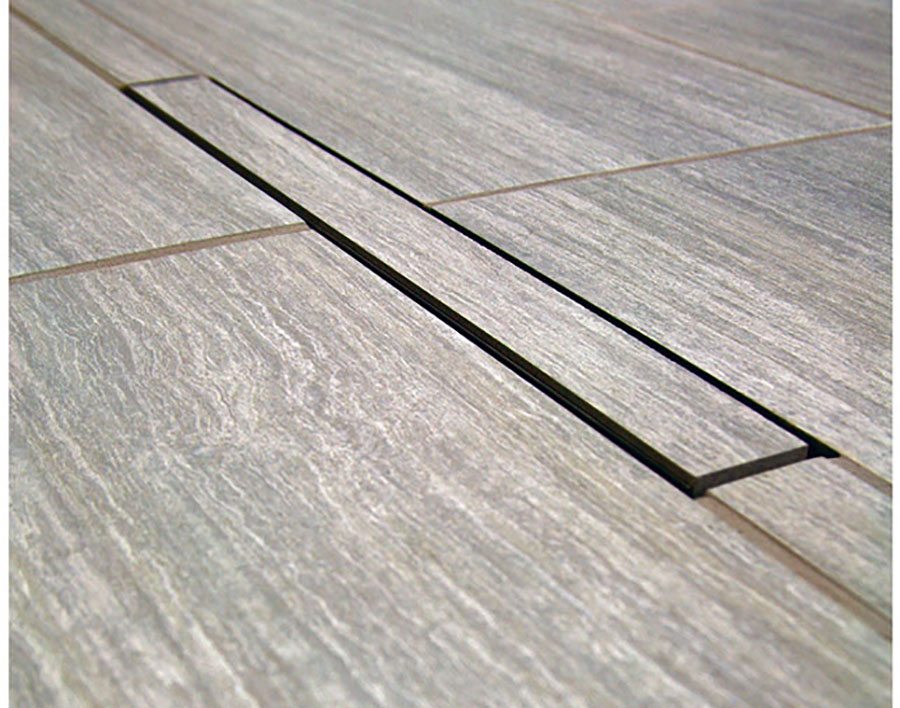
Tile-In is a super slimline drainage system from On The Level, offered in a variety of standard sizes from 600mm to 1200mm lengths and available for bespoke projects on request. The starting price for the Tile-In shown is around £419.
Do I need to tank the entire bathroom?
All walls in the showering area must be tanked from floor to ceiling, says Geoff Avey-Hebditch of Plan-Tec Tiling & Wet Room Solutions. However, he argues that it’s not always necessary to tank the entire bathroom.
“Tanking the whole room is ‘belt and braces’ and the recommended option but not always required,” he explains. “When deciding if the whole bathroom needs tanking, I always take into consideration how big the room is, the size of the shower area, how far the water splashes and if any glass splash panels are present. As an absolute minimum, walls and floors will need tanking at least 300mm past the areas that water can splash.”
James is more cautious and recommends tanking the bottom of the walls all the way around the room, turning up from the floor a minimum of 100mm.
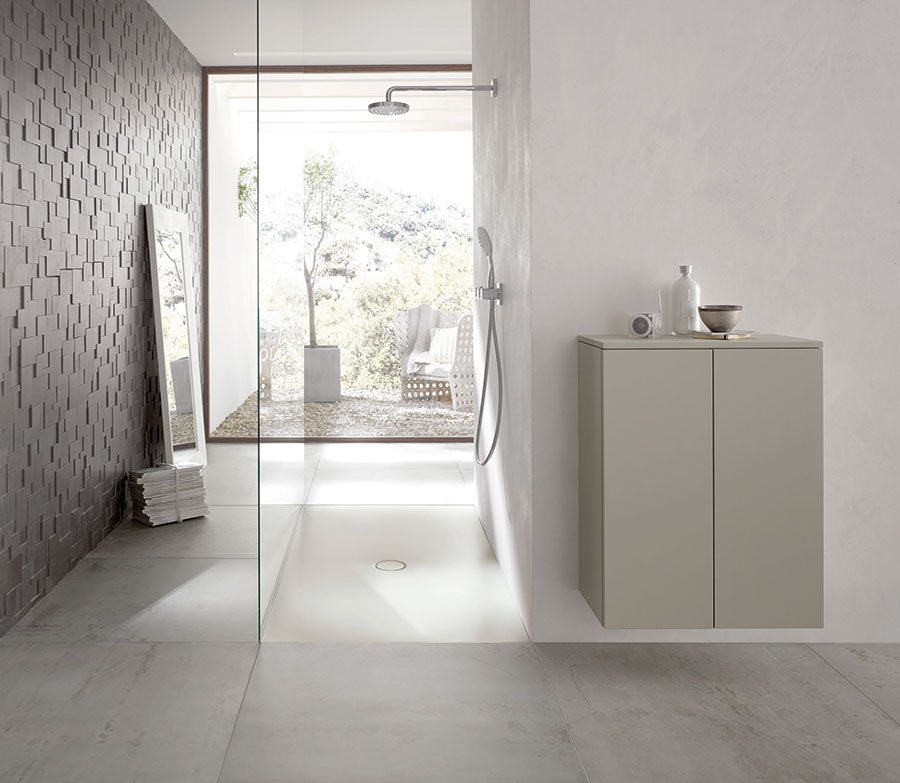
BetteFloor by Bette is a flush-to-floor shower surface made from enamelled steel. Priced from £595, it’s waterproof, easy to clean and won’t harbour dirt or bacteria.
I’m on a budget: is a walk-in shower more expensive than a traditional enclosure?
When it comes to pricing, if you compare the installation cost of a walk-in shower and a similar sized shower enclosure, they will work out to be roughly the same, depending on labour costs.
“You may pay a bit less for a wet floor former than a shower tray, but tanking and additional tiles will need to be purchased. However, an enclosure will generally cost more than a simple glass shower screen,” James explains.
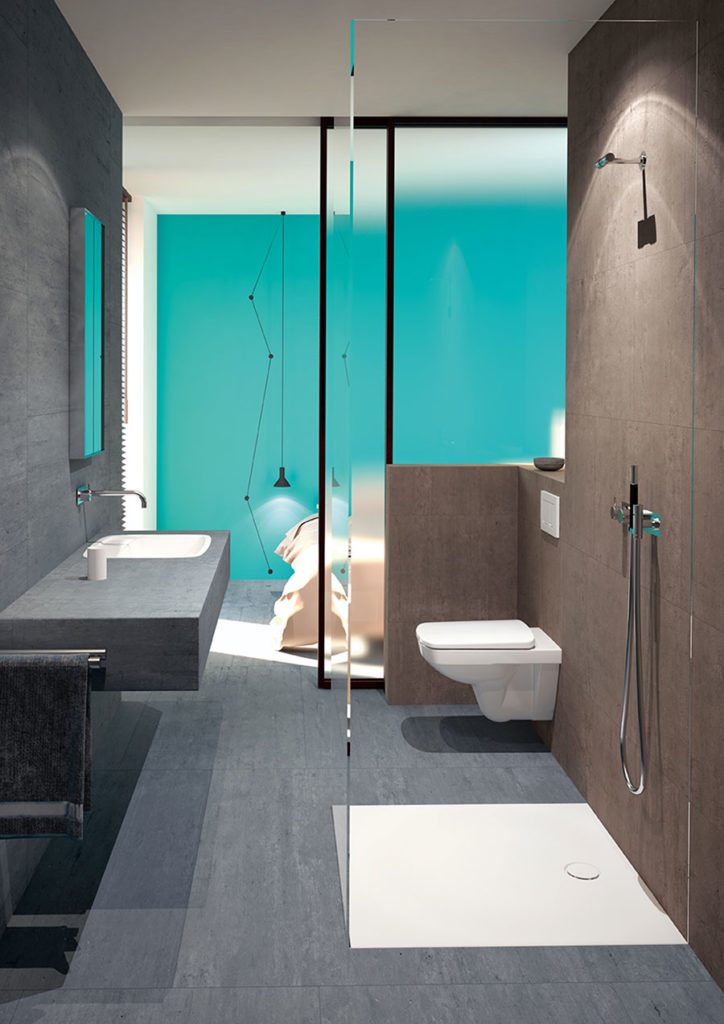
The solid-surface material used to make Setaplano by Geberit allows small defects and scratches to be buffed. It’s also non-porous, meaning it’s easy to clean. It’s available in various sizes, and prices start from £1,079.
Do I need a professional to fit my walk-in shower?
Most of the trays on the market are designed to be fitted by keen amateurs with good manual skills and the correct tools. However, tanking is trickier, and you may need to call in the professionals.
“Lack of knowledge or experience of working with the materials can lead to failures and can be costly,” warns Geoff. “My advice is to call on the expertise of a professional. They should be able to document their experience and knowledge of wet rooms and tanking systems.”
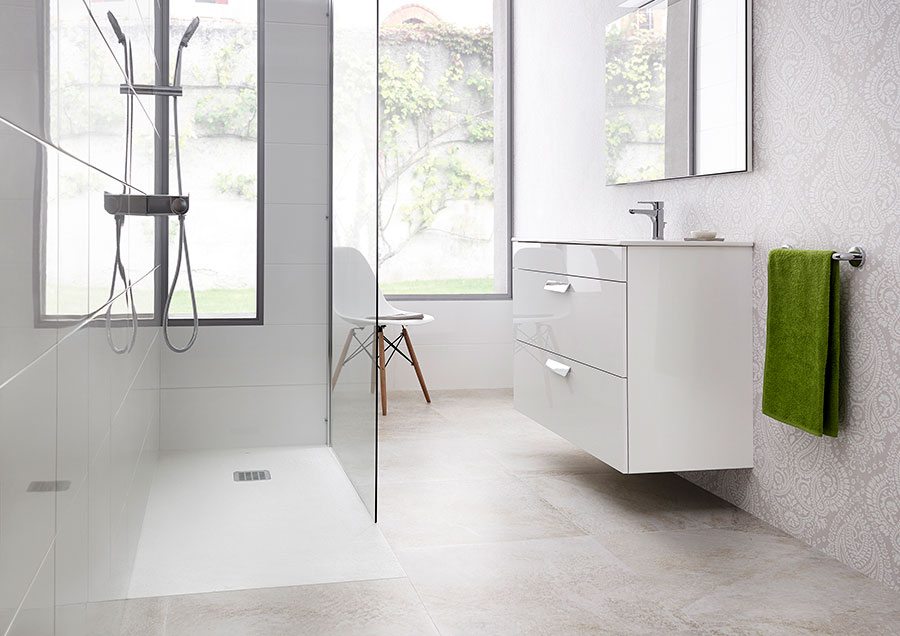
Roca’s Terran slimline shower tray in Stonex is resistant to wear, chemicals and even fading from sunlight. It can be installed in-floor, eliminating the need for steps, and is available frameless from £643 or framed from £857.
Can I have a walk-in shower with underfloor heating?
Yes. In fact, it will be a bonus, as it will help dry the floor as well as keep the tiles warm in winter. James advises keeping underfloor heating outside the wet area as it may cause undulation.
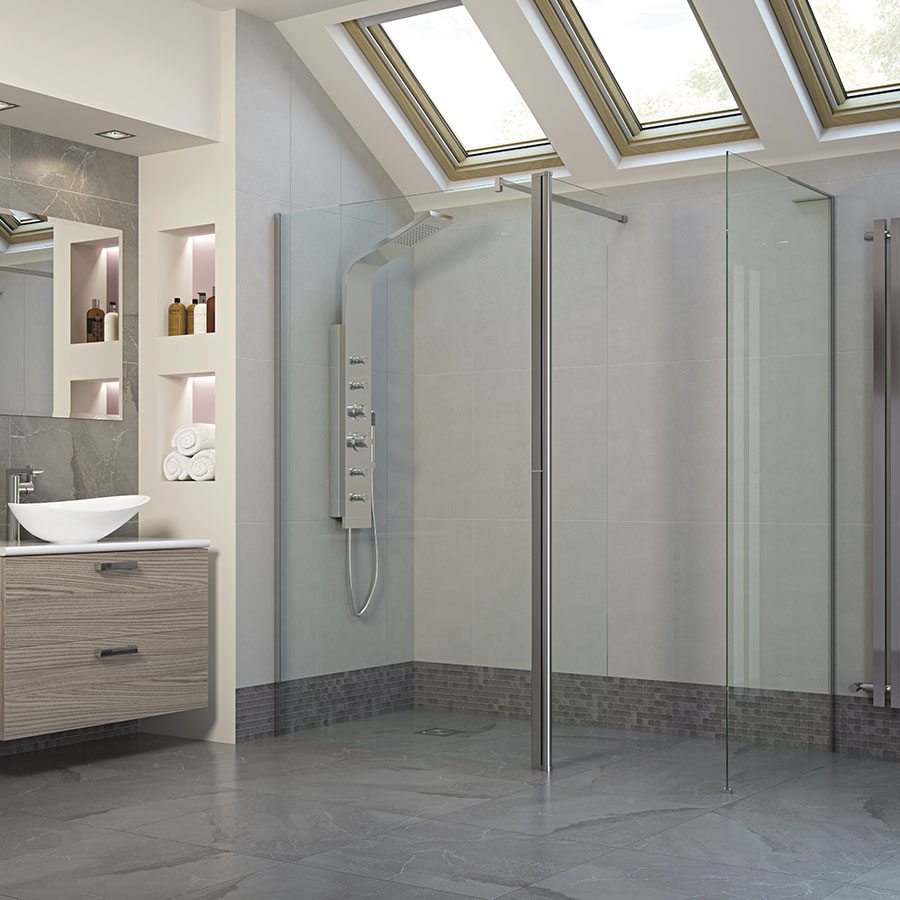
Pictured here with 300mm rotatable return and a left-hand side panel, RefleXion 8, from Bathrooms to Love, is a cutting edge frameless design that can be installed directly onto a prepared floor. Priced from around £970.